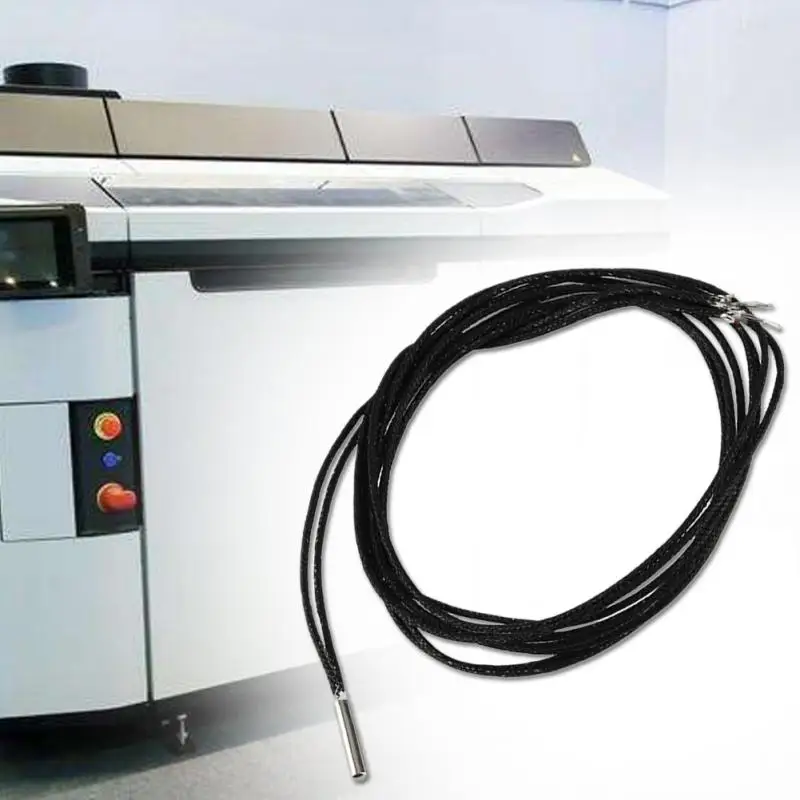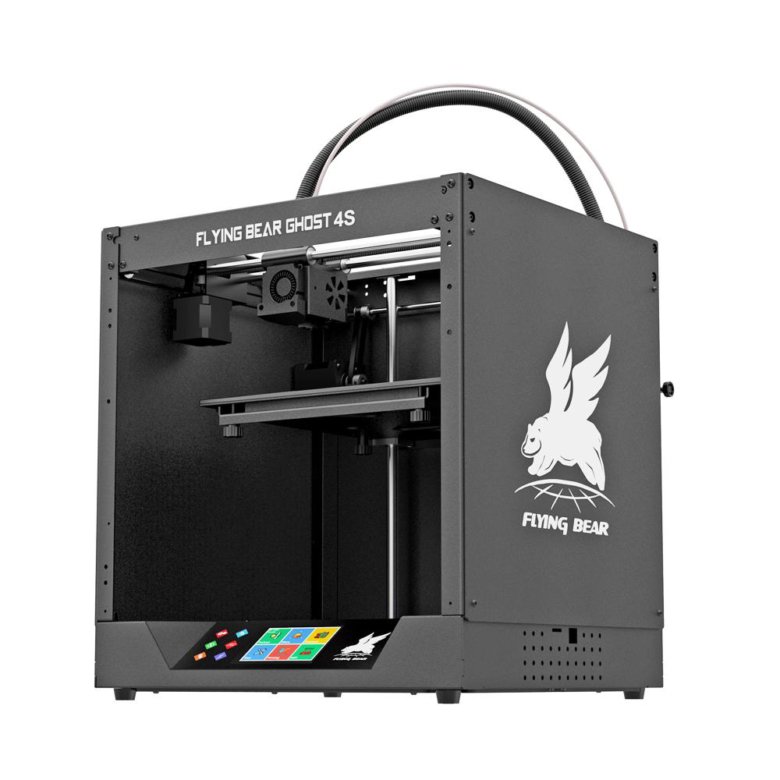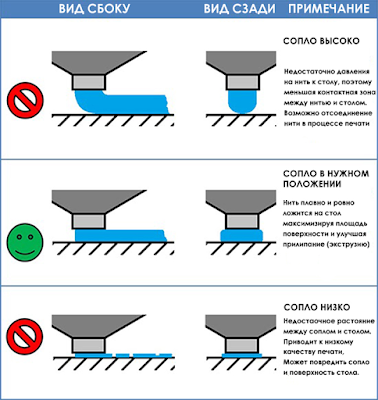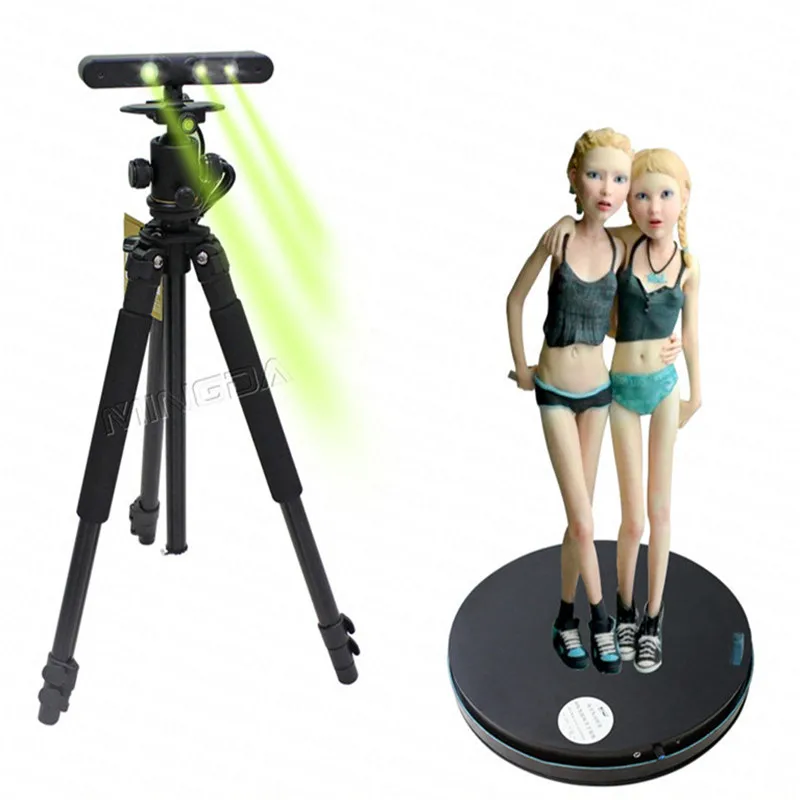3D printing working principle
How a 3D Printer Works and What It Is Used for
3D printing, also known as additive manufacturing, is defined as a process in which a digital file is used to create a three-dimensional solid object. In the 3D printing process, sequential layers of material are laid down by the ‘printer’ until object creation is completed. This article covers the working, software, and applications of 3D printing.
Table of Contents
- What Is 3D Printing?
- How Does 3D Printing Work?
- Top 7 3D Printing Software
- 3D Printing Applications
What Is 3D Printing?
3D printing, also known as additive manufacturing, is a process in which a digital file is used to create a three-dimensional solid object. In the 3D printing process, sequential layers of material are laid down by the ‘3D printer’ until object creation is completed.
3D-printed objects are created through an additive process, where the printer places layer after layer of material until the desired thing is ‘printed’. Each layer can be considered a finely sliced cross-section of the printed item. With 3D printing, users can produce complicated shapes without consuming as much material as traditional manufacturing methods require.
The operation style of 3D printing is the opposite of ‘subtractive manufacturing’, where the material is cut out or hollowed using equipment such as a milling machine. Conversely, additive manufacturing does not need a mold or material block to create physical objects. Instead, it stacks layers of material and fuses them together.
3D printing offers swift product creation, low expenses for the initial fixed infrastructure, and the ability to create complicated geometries using several material types, something traditional manufacturing solutions might not be capable of as efficiently.
Timeline of 3D printing
Generally associated with the Do It Yourself (DIY) culture of amateurs and hobbyists, 3D printing has grown to include commercial and industrial applications. For instance, engineers today often use 3D printers for prototyping and creating lightweight geometric objects.
For instance, engineers today often use 3D printers for prototyping and creating lightweight geometric objects.
The origins of 3D printing lie in ‘rapid prototyping’. When the base technology was first invented in the 1980s, the term was used to describe it because, at the time, 3D printing was only suitable for creating prototypes rather than production components. In fact, the original intent of its creation was simply to accelerate the development of new products through swift prototyping.
Interestingly, the technology did not garner much interest when it was first introduced. In 1981, Japan’s Hideo Kodama filed the first patent for a machine that leveraged UV light for curing photopolymers. Three years later, French inventors Olivier de Witte, Jean Claude André, and Alain Le Mehaute jointly filed a patent for a similar technology. Both patents were abandoned, with General Electric saying the ‘latter lacked notable business potential’.
It was in 1984 that American inventor Charles Hull filed a patent for an ‘Apparatus for Production of Three-Dimensional Objects by Stereolithography’. He invented the STL file and founded 3D Systems three years later, in 1987.
He invented the STL file and founded 3D Systems three years later, in 1987.
Within the same decade, significant strides were made in the US 3D printing space, with patents filed for selective laser sintering (SLS) and fused deposition modeling (FDM). Desktop Manufacturing (DTM) Corp. and Stratasys were pioneering companies in the 3D printing space, founded around the same time.
After that, the industry transformed as rapid commercialization took hold of it. The first ‘3D printers’ were large and cost-intensive, with their makers competing to land contracts for industrial prototyping with large-scale automotive, consumer goods, health products, and aerospace manufacturers.
By 1987, 3D Systems had introduced the first commercial-grade SLA printer; in 1992, Stratasys and DTM released the first commercial FDM and SLS printers, respectively. The first metal 3D printer was introduced in 1994 by Electro Optical Systems (EOS), a German enterprise.
By the dawn of the new millennium, companies in the 3D printing space were competing fiercely for profits. Progress in materials science and the lapse of numerous patents increased the affordability of 3D printing.
Progress in materials science and the lapse of numerous patents increased the affordability of 3D printing.
Soon, thanks to the strides made in the 3D printing space, manufacturing processes were not exclusively owned by enterprises backed by heavy machinery and capital. Today, 3D printing has transformed into a cutting-edge solution for creating many different types of production components.
See More: What Is DevOps? Definition, Goals, Methodology, and Best Practices
How Does 3D Printing Work?
The ISO/ASTM 52900, related to the general principles and terminologies in additive manufacturing, categorizes 3D printing processes into seven distinct groups. Each type of 3D printing works a little differently.
The time taken to print a 3D object depends on the type of printing, the output size, the type of material, the desired quality, and the setup configuration. 3D printing can take anywhere from a few minutes to a few days.
The different types of 3D printing are:
1.
 Powder bed fusion
Powder bed fusionIn powder bed fusion (PBF), thermal energy, in the form of an electron beam or laser, selectively fuses specific areas of a powder bed to create layers. These layers are built on one another until a part is made.
PBF may include sintering or melting processes; however, the primary operation method remains the same. First, a recoating roller or blade places a fine layer of powder on the build platform. Next, the surface of the powder bed is scanned using a heat source. This source selectively increases particle temperature to bind specific areas.
Once the heat source scans a cross-section or layer, the platform descends to let the process be repeated for the next layer. The final output is a volume with fused parts, with the surrounding powder remaining unaffected. The platform then ascends to allow retrieval of the completed build. Powder bed fusion includes several standard printing methods, such as selective laser sintering (SLS) and direct metal laser sintering (DMLS).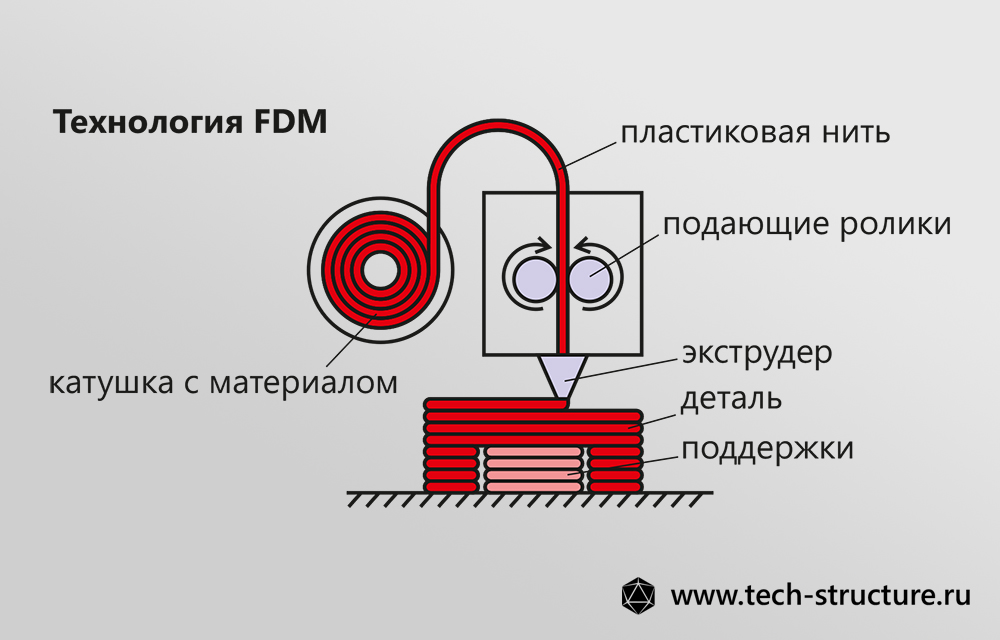
SLS is regularly leveraged for manufacturing polymer parts for prototypes and functional components. SLS printing takes place with the powder bed as the sole support structure. The lack of additional support structures allows for the creation of complex geometries. However, produced parts often feature inner porosity and a grainy surface and generally require post-processing.
SLS is similar to selective laser melting (SLM), electron beam powder bed fusion (EBPBF), and direct metal laser sintering (DMLS). However, these processes are used for creating metal parts and rely on a laser for fusing powder particles, one layer at a time.
DMLS increases the temperature of the particles only up to the point of fusion, whereby they combine at a molecular level. On the other hand, SLM completely melts metal particles. Both these techniques are heat-intensive and thus require support structures. Once the process ends, the support structures are removed using CNC machining or manually.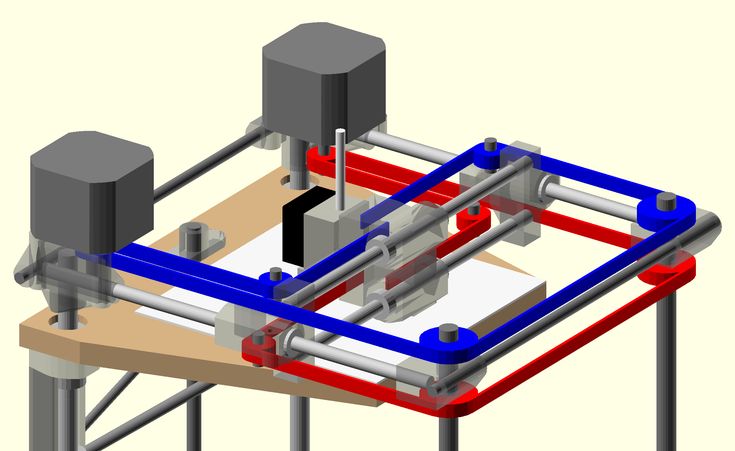 Parts are then thermally treated to address residual stresses during post-processing.
Parts are then thermally treated to address residual stresses during post-processing.
These metal 3D printing techniques create components with high-quality physical properties, sometimes even more robust than the base metal used. The surface finish is often excellent as well. In terms of material, these techniques can process metal superalloys and ceramics that can be hard to use in other processes. However, both DMLS and SLM are cost-intensive, and the system’s volume constrains the output size.
2. VAT photopolymerization
VAT photopolymerization can be split into two methodologies: digital light processing (DLP) and stereolithography (SLA). Both these processes create components one layer at a time by using a light source to selectively cure liquid material (usually resin) stored in a vat.
DLP works by ‘flashing’ an image of each complete layer onto the surface of the liquid in the vat. On the other hand, SLA relies on a single-point UV source or laser to cure the liquid.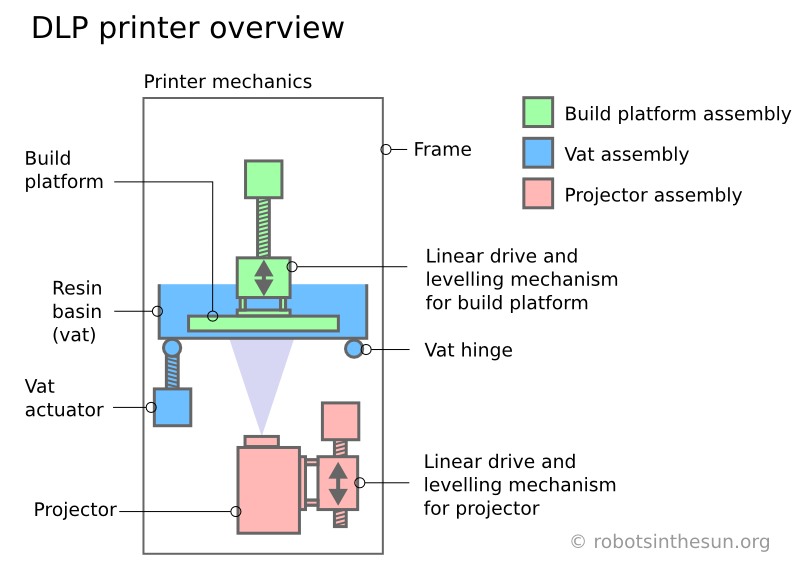 Excess resin has to be cleaned off the output once printing is completed, after which the item must be exposed to light to improve its strength further. Support structures, if any, will need to be removed post-processing, and one can further process the part to create a higher quality finish.
Excess resin has to be cleaned off the output once printing is completed, after which the item must be exposed to light to improve its strength further. Support structures, if any, will need to be removed post-processing, and one can further process the part to create a higher quality finish.
These methods are best-suited for output that requires high-level dimensional accuracy, as they can create intricately detailed items with an excellent finish. DLP and SLA are, therefore, well-suited for the production of prototypes.
However, these methods’ output is often brittle, making them less suited for functional prototypes. These parts’ color and mechanical properties are also likely to degrade in the sun’s UV light, making them unsuitable for outdoor use. Finally, support structures are often required and might leave blemishes, which one can remove through post-processing.
3. Binder jetting
Binder jetting works by depositing a fine layer of powdered material, such as polymer sand, ceramic, or metal, onto the build platform.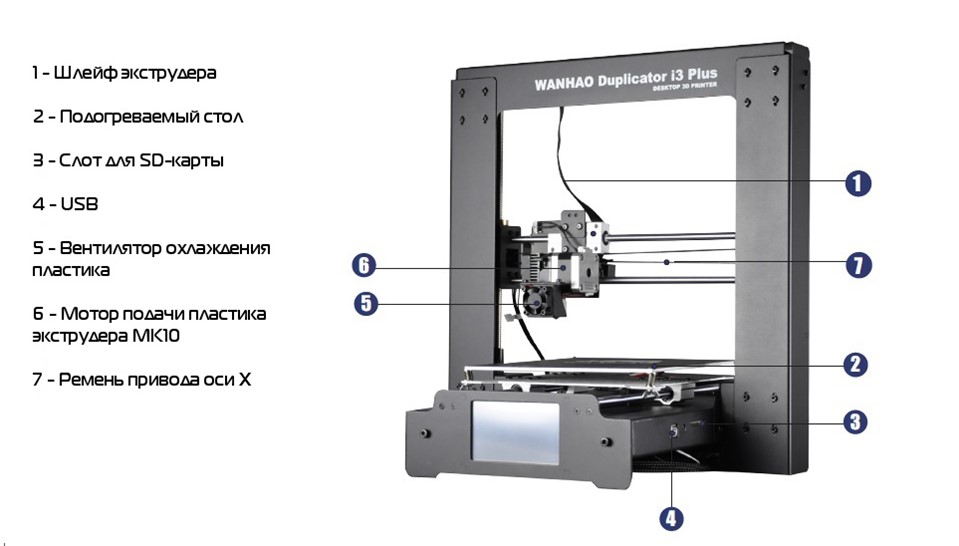 After this, a print head deposits adhesive drops to bind these particles. The part is hence built layer by layer.
After this, a print head deposits adhesive drops to bind these particles. The part is hence built layer by layer.
Metal parts must be thermally sintered or infiltrated with a metal that has a low melting point, such as bronze. Parts made of ceramic or full-color polymer can be saturated using a cyanoacrylate adhesive. Post-processing is generally required to finish the output.
Binder jetting has numerous applications, including large-scale ceramic molds, full-color prototypes, and 3D metal printing.
4. Material jetting
Material jetting is conceptually similar to inkjet printing. However, instead of inserting ink on paper, it uses one or more print heads to deposit layers of liquid material. Each layer is cured before the next layer is produced. While material jetting relies on support structures, they can be created using a water-soluble substance that is washable after the building is completed.
This highly precise process is well-suited for creating full-color parts using different material types.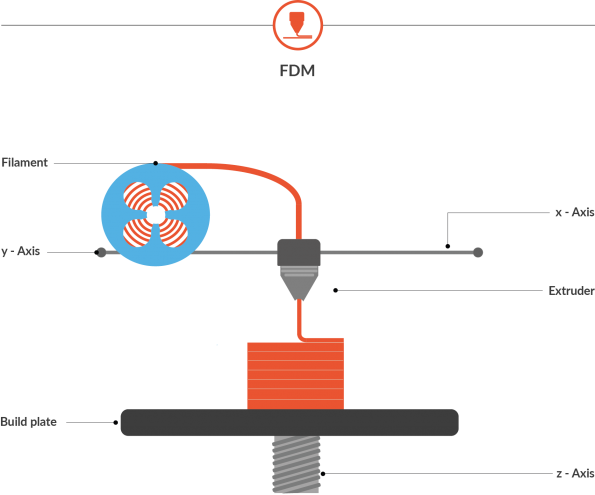 However, it is cost-intensive, and the output tends to be brittle and degradable.
However, it is cost-intensive, and the output tends to be brittle and degradable.
5. Fused deposition modeling
In fused deposition modeling (FDM), a heated nozzle is used to feed a filament spool to an extrusion head. The extrusion head increases the temperature of the material, softening it before placing it in predetermined areas to cool. Once a material layer is created, the build platform descends and prepares for the next layer to be placed.
This process, also known as material extrusion, features low lead times and is cost-effective. However, its dimensional accuracy is low, and a smooth finish often requires post-processing. The output is also not well-suited for critical applications as it tends to be anisotropic, i.e., weaker in one direction.
6. Sheet lamination
Sheet lamination can be further classified into two technologies: ultrasonic additive manufacturing (UAM) and laminated object manufacturing (LOM). UAM has a low energy and temperature requirement and works by joining thin metal sheets using ultrasonic welding.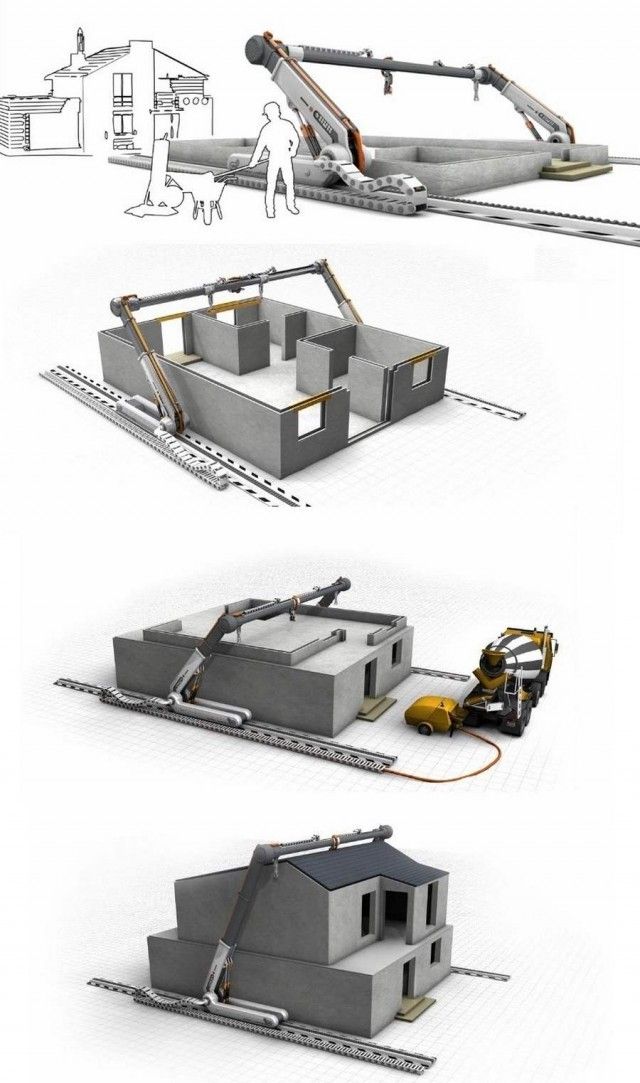 It works with several metals, including stainless steel, titanium, and aluminum. On the other hand, LOM places layers of material and adhesive alternatively to create the final output.
It works with several metals, including stainless steel, titanium, and aluminum. On the other hand, LOM places layers of material and adhesive alternatively to create the final output.
7. Direct energy deposition
This technique uses a laser, electric arc, electron beam, or another form of focused thermal energy to fuse powder or wire feedstock as it is placed. The process takes place horizontally to create layers, which are then stacked vertically for part creation. It is suited for different material types, including ceramics, polymers, and metals.
See More: What Is Serverless? Definition, Architecture, Examples, and Applications
Top 7 3D Printing Software
The 3D printing space is heavily software-dependent, with programs required for everything from designing the output and slicing it into G-code to controlling the 3D printer. Let’s check out the top 3D printing software across applications.
1. MatterControl 2.0
This solution by MatterHackers is an all-in-one printer host, slicer, and CAD software for desktops. Users can create new models in the CAD section and slice them. Once the model is ready to print, MatterControl 2.0 can be used to directly monitor and control printing via a USB connection or over a Wi-Fi module.
Users can create new models in the CAD section and slice them. Once the model is ready to print, MatterControl 2.0 can be used to directly monitor and control printing via a USB connection or over a Wi-Fi module.
The software features an intuitive interface and allows users to explore a collection of geometric primitives that users can import into the print. These primitives can be dragged into position on the standard triangle language (STL) file to be printed and designated as support structures.
MatterControl also gives users access to advanced print configurations, making it ideal for end-to-end design, support preparation, slicing, and control. Enterprise users can upgrade to MatterControl Pro for even more valuable features.
2. Tinkercad
This free, browser-based solution allows users to design printable 3D models and provides a starting place for practicing solid modeling. Its easy-to-use block-building feature enables users to form models using basic shapes.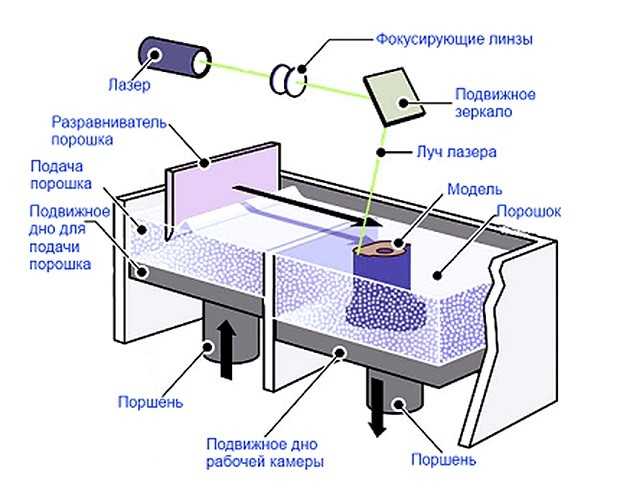
Tinkercad has numerous guides and tutorials to help users create the desired designs, which can then be exported or shared easily. Its library gives users access to millions of files, allowing them to find and modify the required shape. Finally, it features direct integration with third-party printing services.
3. Blender
This free, open-source tool is well-suited for both newbies and advanced users. It is feature-rich and can be used for 3D modeling and sculpting, as well as for animation, rendering, simulation, video editing, and motion tracking. However, it has a steep learning curve.
4. UVTools
This open-source solution is a comprehensive resin printing suite, an excellent file viewer, and optimized for layer repair and manipulation for masked SLA. It is compatible with PrusaSlicer, giving users access to numerous third-party MSLA printer profiles.
Twin-stage motor control (TSMC) is a crucial feature of UVTools, enabling tiered print speeds for different movement parts for each layer.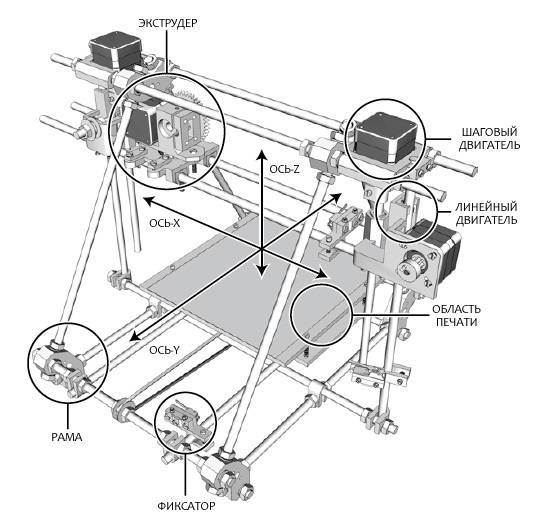 This reduces print time and boosts the likelihood of print success.
This reduces print time and boosts the likelihood of print success.
Finally, UVTools allows users to create a custom resin layer cure time calibration print for testing new resins and setting the appropriate configuration for different layer heights.
5. WebPrinter
This browser-based solution can be used to preview G-code without having to open the file in a full-capability slicer. Users simply need to upload the G-code file, and WebPrinter will show the tool pathing that the file will transmit to the 3D printer. It is a fast and simple method to view a potential 3D print output.
6. Ultimaker Cura
This open-source slicer is compatible with most modern 3D printers. Cura is well-suited for beginners as it is easy to use, swift, and intuitive. On the other hand, advanced users can leverage it to access 200 settings for refining prints.
7. Simplify3D
Simplify3D is a powerful slicing tool for enhancing 3D print quality. It slices CAD into layers, corrects model issues, and showcases a user preview of the final output.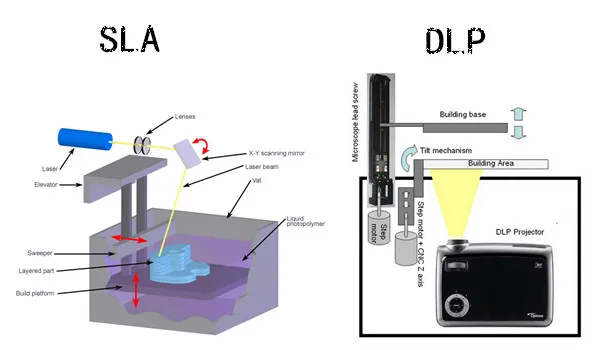 Its premium features are handy for enterprise heavy-use 3D printers.
Its premium features are handy for enterprise heavy-use 3D printers.
See More: What Are Microservices? Definition, Examples, Architecture, and Best Practices for 2022
3D Printing Applications
Although 3D printing is not a recent invention, it has gained immense popularity in recent times across industries due to its newfound simplicity, efficiency, and cost-effectiveness.
The top applications of 3D printing are:
1. Construction
Construction is one of the significant applications of 3D printing. Concrete 3D printing has been explored since the 1990s as researchers sought a faster and cheaper way to construct structures. Specific applications of 3D printing in construction include additive welding, powder bonding (reactive bond, polymer bond, sintering), and extrusion (foam, wax, cement/concrete, polymers).
Today, large-scale 3D printers designed to print concrete are used to pour foundations and erect site walls. They are also capable of printing modular concrete sections for onsite assembly.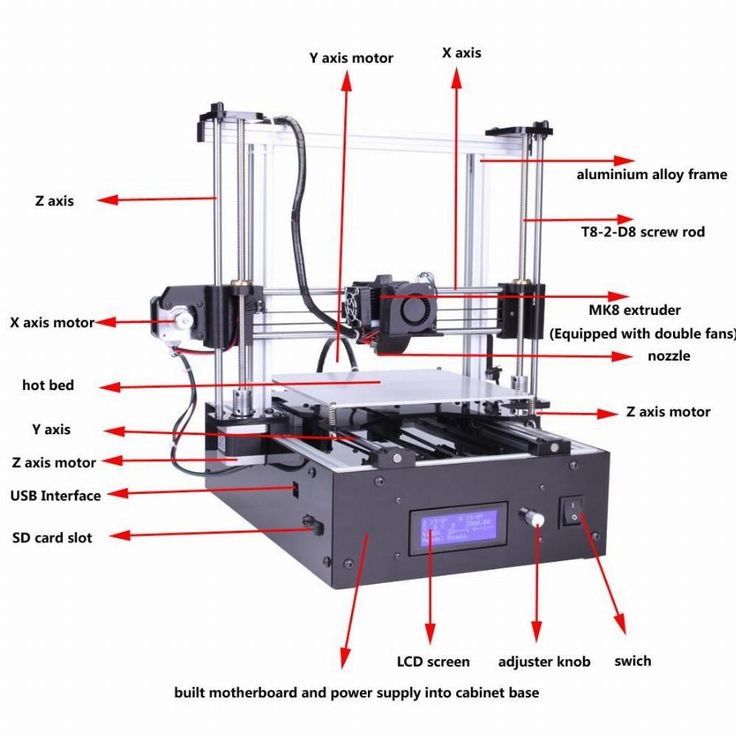 These solutions allow for higher accuracy, more complexity, faster construction, and improved functional integration while lowering labor costs and minimizing waste.
These solutions allow for higher accuracy, more complexity, faster construction, and improved functional integration while lowering labor costs and minimizing waste.
In 2016, the first pedestrian bridge (12 meters long, 1.75 meters wide) was 3D printed in Spain using micro-reinforced concrete. A year later, the first fully 3D-printed residence was built in Russia. 600 wall elements were 3D-printed and assembled, after which, the roof and interiors were created for a total area of nearly 300 sq meters.
3D printing is also helpful in producing architectural-scale models. It is even being explored as a solution for constructing extraterrestrial habitats on the Moon or Mars, should the need ever arise.
2. Prototyping and manufacturing
In the case of traditional injection-molded prototyping, it can take weeks to produce a single mold that would cost up to hundreds of thousands of dollars. As established earlier in the article, the original purpose of 3D printing was faster and more efficient prototyping.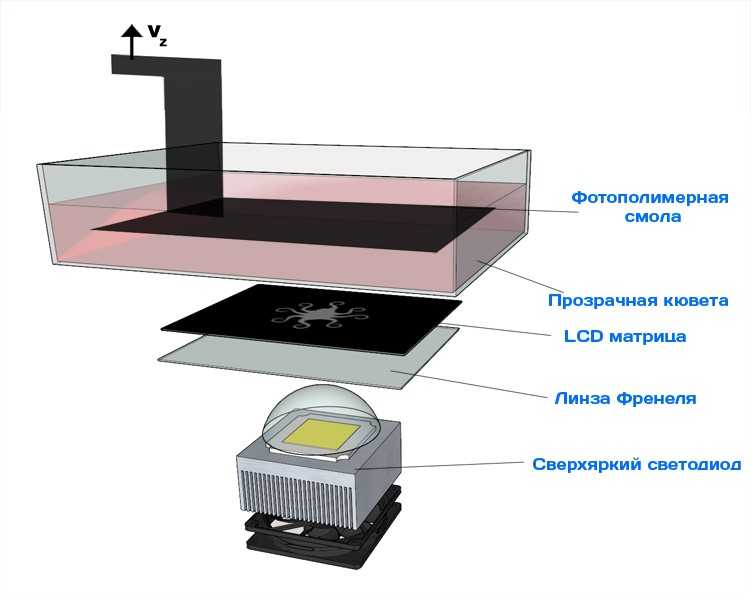
3D printing technology minimizes lead times in manufacturing, enabling prototyping to be completed within a few hours and at a small percentage of traditional costs. This makes it especially ideal for projects where users must upgrade the design with every iteration.
3D printing is also suitable for manufacturing products that do not need to be mass-produced or are usually customized. SLS and DMLS are used in the rapid manufacturing of final products, not just prototypes.
3. Healthcare
In healthcare, 3D printing creates prototypes for new product development in the medical and dental fields. In dentistry, 3D printing is also helpful in creating patterns for casting metal dental crowns and manufacturing tools for creating dental aligners.
The solution is also helpful for directly manufacturing knee and hip implants and other stock items and creating patient-specific items such as personalized prosthetics, hearing aids, and orthotic insoles. The possibility of 3D-printed surgical guides for particular operations and 3D-printed bone, skin, tissue, organs, and pharmaceuticals is being explored.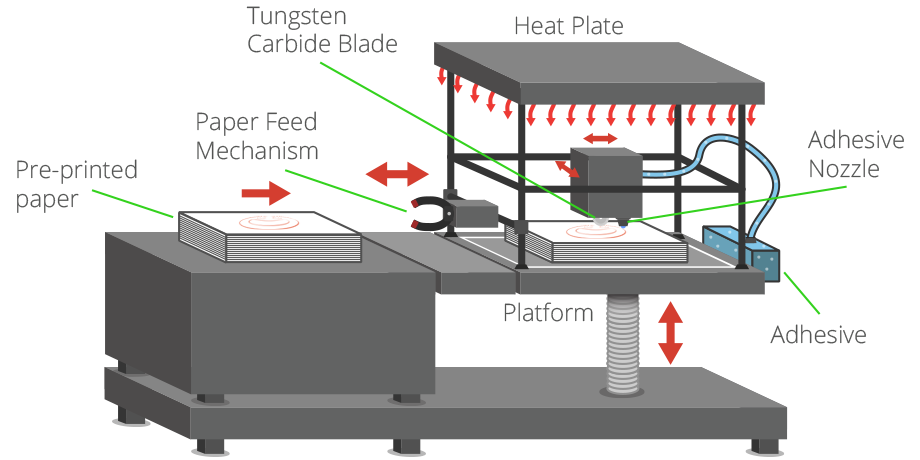
4. Aerospace
In aerospace, 3D printing is used for prototyping and product development. The solution is also critically helpful in aircraft development, as it helps researchers keep up with the strenuous requirements of R&D without compromising on the high industry standards. Certain non-critical or older aircraft components are 3D-printed for the flight!
5. Automotive
Automotive enterprises, especially those specializing in racing automobiles, such as those used in F1, leverage 3D printing for prototyping and manufacturing specific components. Organizations in this space are also exploring the possibility of using 3D printing to fulfill aftermarket demand by producing spare parts as customers require rather than stocking them up.
See More: What Is an API (Application Programming Interface)? Meaning, Working, Types, Protocols, and Examples
Takeaway
The term ‘3D printing’ encompasses numerous technologies and processes that collectively offer a wide range of capabilities for producing components using various materials.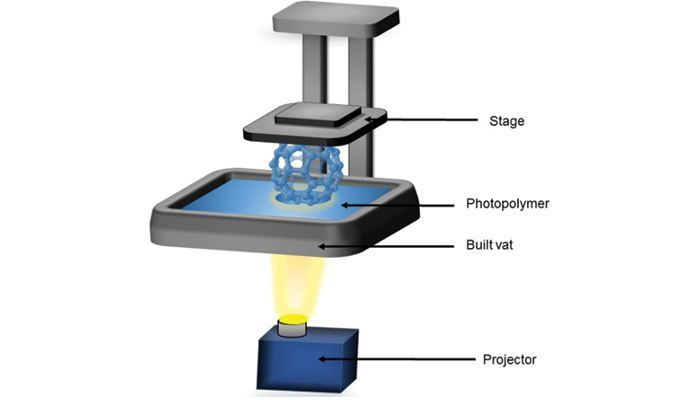 The key similarity across 3D printing types is the additive layer-by-layer production process where no subtractive methodology, molding, or casting is required. Applications of 3D printing are rapidly emerging across industry verticals as the solution becomes more effective and affordable and penetrates deeply and widely across sectors.
The key similarity across 3D printing types is the additive layer-by-layer production process where no subtractive methodology, molding, or casting is required. Applications of 3D printing are rapidly emerging across industry verticals as the solution becomes more effective and affordable and penetrates deeply and widely across sectors.
Did this article help you gain a comprehensive understanding of 3D printing? Share your views with us on Facebook, Twitter, or LinkedIn!
MORE ON DEVOPS- What Is Agile Software Development? Life Cycle, Methodology, and Examples
- Terraform vs. Ansible: Understanding the Key Differences
- Software Developer vs. Software Engineer: Top 10 Differences
- What Is OOP (Object Oriented Programming)? Meaning, Concepts, and Benefits
- What Is Version Control? Meaning, Tools, and Advantages
What Is 3D Printing? Working Principle | Types | Applications
The concept of 3D Printing was laid out by David E.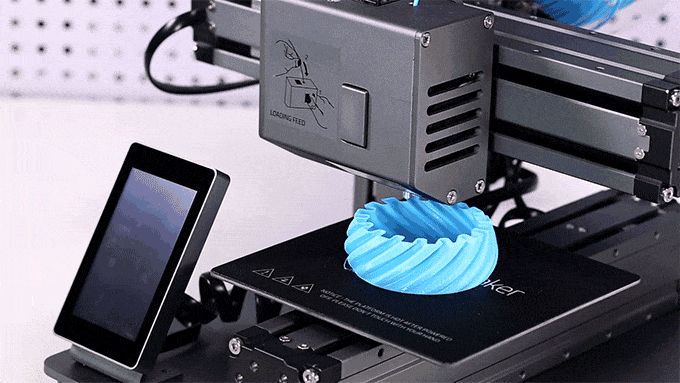 H. Jones in 1974. However, methods and materials for fabricating models weren’t developed until the early 1980s.
H. Jones in 1974. However, methods and materials for fabricating models weren’t developed until the early 1980s.
The term ‘3D printing’ covers numerous processes and techniques that offer a wide spectrum of capabilities for the production of parts and products in different materials. In recent years, these processes have developed significantly and can now perform crucial roles in many applications.
This overview article aims to explain the different types and processes of 3D Printing, how do they work, and what are their uses and benefits in the current market. Let’s start with a very basic question.
What Is 3D Printing?
3D Printing, also known as additive manufacturing, is a process of making a physical object from a three-dimensional digital model or a CAD model. It involves various computer-controlled techniques in which material is joined or solidified to build an actual object.
Typically, the material (such as powder grains or liquid molecules being fused together) is added layer by layer at the millimeter scale.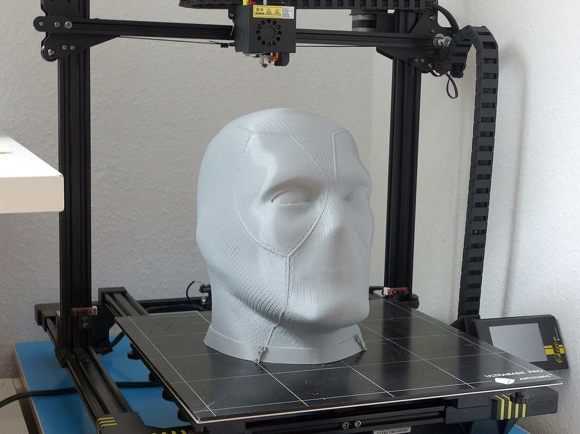 This is why 3D Printing is also called an additive manufacturing process.
This is why 3D Printing is also called an additive manufacturing process.
The image illustrates how a 3D printer prints three-dimensional objects layer by layer | 3D Logics
In the 1990s, 3D printing techniques were referred to as rapid prototyping. They were suitable only for the fabrication of aesthetic or functional prototypes. Since then, we have come a long way.
Today’s 3D printing technology is advanced enough to create complex structures and geometries that would be otherwise impossible to build manually.
The precision, material range, and repeatability of 3D Printing has increased to the point that we can construct almost anything — from simple prototypes to complex final products such as eco-friendly building, aircraft parts, medical instruments, and even artificial organs using layers of human cells.
Read: Scientists 3D Print An Artificial Human Cornea Using’ Bio-ink’
How Does It Work Exactly?
All 3D printing techniques are based on the same principle: a 3D printer takes a digital model (as input) and turns it into a physical three-dimensional object by adding material layer by layer.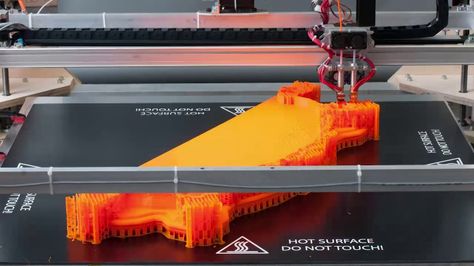
It is way different than traditional manufacturing processes such as injection molding and CNC machining that uses various cutting tools to construct the desired structure from a solid block. 3D Printing, however, requires no cutting tools: objects are manufactured directly onto the built platform.
The process starts with a digital 3D model (a blueprint of the object). The software (specific to the printer) slices the 3D model into thin, two-dimensional layers. It then converts them into a set of instructions in machine language for the printer to execute.
Depending on the type of printer and size of the object, a print takes several hours to complete. The printed object often requires post-processing (like sanding, lacquer, paint, or other types of conventional finishing touches) to achieve the optimal surface finish, which takes additional time and manual effort.
Different types of 3D printers employ different technologies that process different materials in different ways.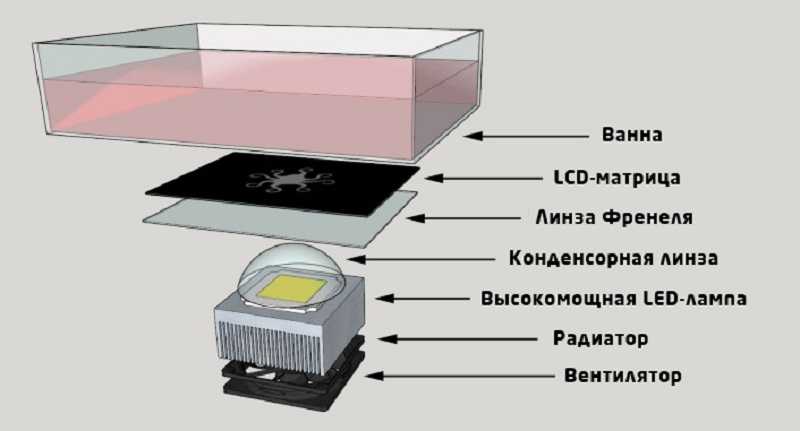 Perhaps the most basic limitation of 3D Printing, in terms of materials and applications, is that there is no one-size-fits-all solution.1
Perhaps the most basic limitation of 3D Printing, in terms of materials and applications, is that there is no one-size-fits-all solution.1
Types/Processes Of 3D Printing
As per the ISO/ASTM 52900 standard, all 3D printing processes can be categorized into seven groups. Each has pros and cons associated with it, which usually involve aspects such as cost, speed, material properties, and geometrical limitations.
1. Vat photopolymerization
Illustration of SLA: a laser(a) selectively illuminates the transparent bottom(c) of a tank filled(b) with a liquid photo-polymerizing resin. The lifting platform(e) progressively drags up the solidified resin(d).
A 3D printer based on Vat photopolymerization has a container filled with photopolymer resin, which is hardened with an ultraviolet light source to create an object. The three most common forms of Vat Polymerization are
1a) Stereolithography (SLA): Invented in 1984, SLA uses an ultraviolet laser to crosslink chemical monomers and oligomers to form polymers that make up the body of a three-dimensional solid. While the process is fast and can construct almost any structure, it can be expensive.
While the process is fast and can construct almost any structure, it can be expensive.
1b) Digital Light Processing (DLP): It utilizes conventional light sources such as arc lamps (instead of lasers). Each layer of the object is projected onto the vat of liquid resin, which is then solidified layer by layer as the lifting platform moves up or down.
1c) Continuous Liquid Interface Production (CLIP): It is similar to stereolithography but continuous and up to 100 times faster. CLIP can produce rubbery and flexible objects with smooth sides, that couldn’t be created with other techniques.
2. Material Extrusion
Illustration of material extrusion: Nozzle(1) is depositing material(2) on a build platform(3).
In this process, a filament of solid thermoplastic material is pushed through a heated nozzle, which melts the material and deposits it on a build platform along a predetermined path. This material eventually cools and solidifies, forming a three-dimensional object.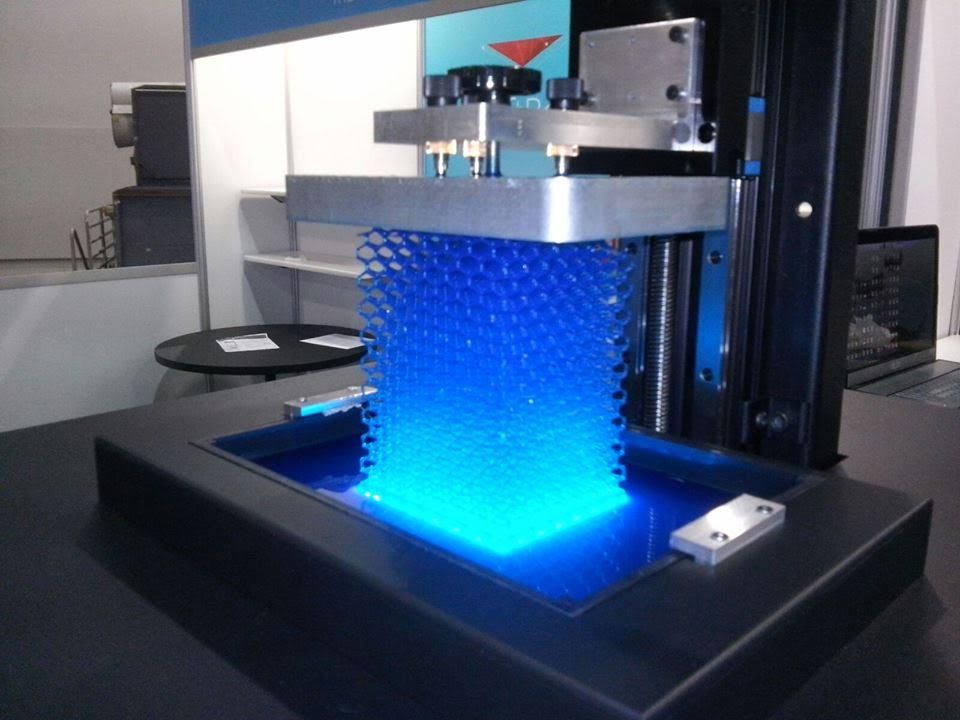 The most commonly used techniques in this process are
The most commonly used techniques in this process are
2a) Fused Deposition Modeling (FDM): It uses a continuous filament of a thermoplastic material, such as nylon, thermoplastic polyurethane, or polylactic acid.
2b) Robocasting: It involves extrusion of a paste-like material from a small nozzle while the nozzle is moved across a build platform. The process is different from FDM as it doesn’t rely on drying or solidification of material to retain its shape after extrusion.
3. Sheet Lamination
Some printers use paper and plastic as the build material to lower the cost of Printing. In this technique, multiple layers of adhesive plastic, paper, or metal laminates are successively joined together and cut to shape using a laser cutter or knife.
The layer resolution can be defined by the material feedstock. Typically it ranges between one and a few sheets of copy paper. The process can be used to make large parts, but the dimensional accuracy of the final product will be quite lower than that of stereolithography.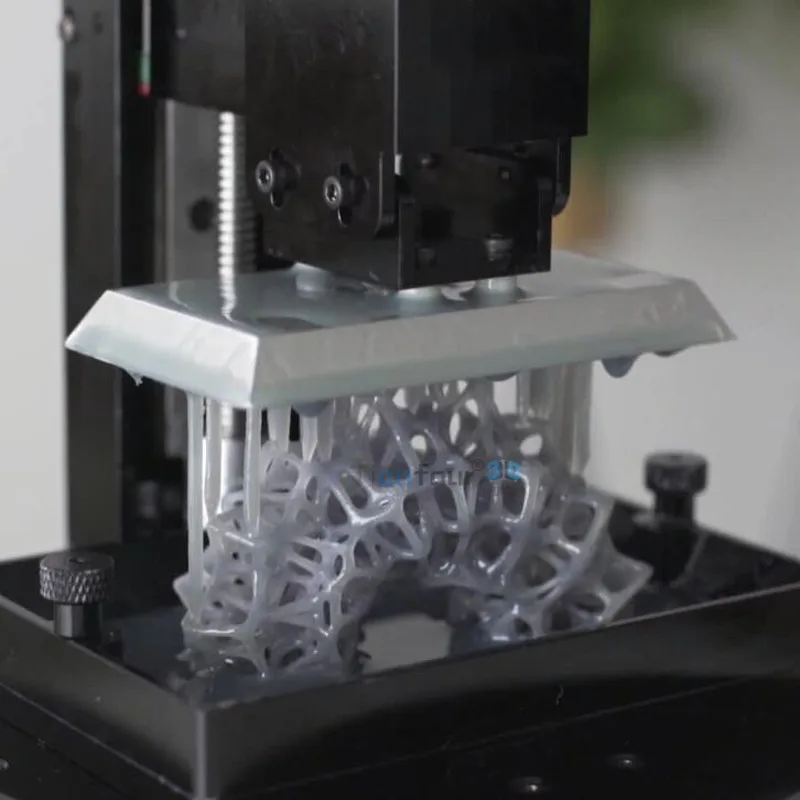
4. Directed Energy Deposition
Directed energy deposition technique is commonly used in the high-tech metal industry and rapid manufacturing applications. The printing apparatus contains a nozzle that is fixed to a multi-axis robotic arm. The nozzle deposits a metal power on the build platform, which is then melted by a laser, plasma or electron beam, to form a solid object.
This type of 3D Printing supports various metals, functionally graded materials, and composites, including aluminum, stainless steel, and titanium. Not only can it construct completely new metal parts but can also attach material(s) to existing parts, enabling hybrid manufacturing applications.
5. Material Jetting
Parts printed with the material jetting process
Material jetting operates in a similar fashion to inkjet paper printers. In this process, a photosensitive material is applied in droplets through a small diameter nozzle and then hardened by ultraviolet light, building a part layer-by-layer.
The materials used in this technique are thermoset photopolymers (acrylics). Multi-material printing and a broad range of materials (including rubber-like and transparent materials) are also available.
Since material jetting 3D Printing can construct parts of high dimensional accuracy with a smooth surface finish, it’s an attractive option for manufacturing both visual prototypes and commercial tools.
6. Binder Jetting
A full-color print printed in sandstone with Binder Jetting | Image credit: 3D Hubs
Binder jetting uses two materials: powder base material and a liquid binder. The powder is distributed in even layers in the build chamber, and binder is applied through jet nozzles, which ‘glue’ the powder particles to build the desired object.
Wax or thermoset polymer is often mixed with bonded powder to increase its strength. After the 3D print is completed, the leftover powder is collected and used for printing another structure.
Since the technique is very similar to an inkjet-like process, it is also called the inject 3D Printing.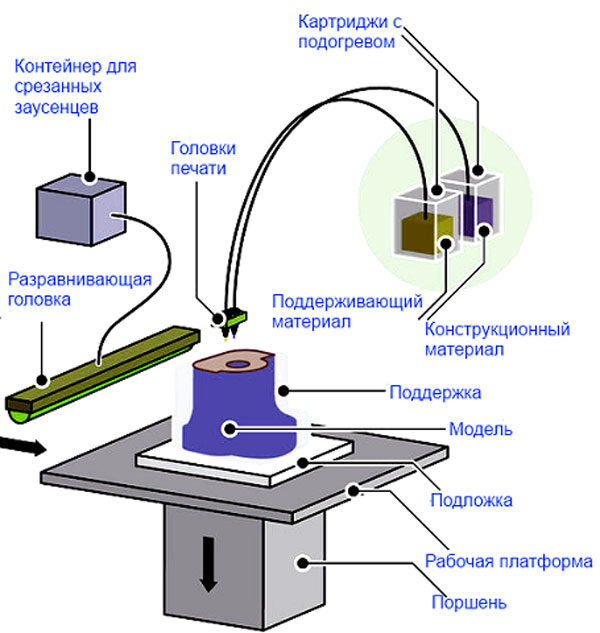 It is mostly used for printing elastomer parts, overhangs, and colorful prototypes.
It is mostly used for printing elastomer parts, overhangs, and colorful prototypes.
7. Powder Bed Fusion
An SLS system | DTM – 2500CI
Powder bed fusion is a subset of additive manufacturing whereby a heat source (such as thermal print head or laser) is used to consolidate material in powder form to build physical objects. The five most common forms of this technology are
7a) Selective Laser Sintering (SLS): It uses a laser as the power source to sinter powdered material like polyamide or nylon. Here the term sinter refers to the process of compacting and forming a solid mass of material by applying pressure or heat without melting it to the point of liquefaction.
7b) Selective Laser Melting (SLM): Unlike SLS, this technique is designed to completely melt and fuse metallic powders together. It can create fully dense materials (layer by layer) that have mechanical characteristics similar to those of traditional manufactured metals. This is one of the fast-developing processes that is being implemented in both industry and research.
This is one of the fast-developing processes that is being implemented in both industry and research.
7c) Electron Beam Melting (EBM): In the process, the raw material (wire or metal powder) is placed inside a vacuum and fused together using an electron beam. Although EBM can only be used with conductive materials, it has superior build speed because of its higher energy density.
7d) Selective Heat Sintering (SHS): It uses a thermal printhead to apply heat to layers of powdered thermoplastic. As soon as the layer is finished, the powder bed moves down, and a new layer of material is added, which is then sintered to form the next cross-section of the model. This technique is best for manufacturing inexpensive prototypes and parts for functional testing.
7e) Direct Metal Laser Sintering (DMLS): It is similar to SLS but uses metal power instead. The leftover power becomes a support structure for the object and can be reused for the next 3D print.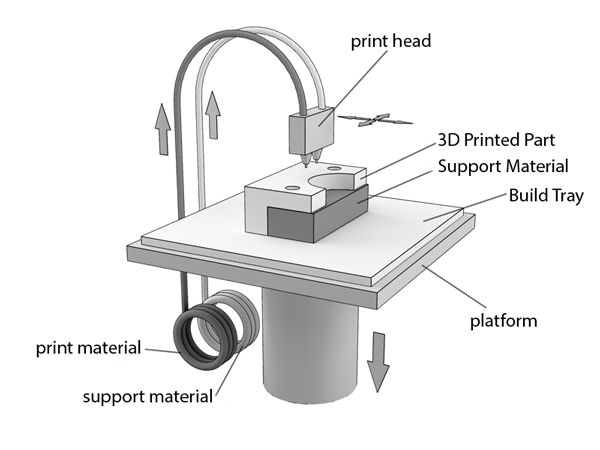 DMLS parts are mostly made with powdered materials like titanium, stainless steel, aluminum, and several niche alloys. It’s an ideal process for custom medical parts, oil and gas components, and tough functional prototypes.
DMLS parts are mostly made with powdered materials like titanium, stainless steel, aluminum, and several niche alloys. It’s an ideal process for custom medical parts, oil and gas components, and tough functional prototypes.
Application
In the recent decade, 3D Printing has developed significantly. Since it can be used to quickly manufacture complex designs at cheaper costs, it has become an essential tool in a variety of industries, ranging from commercial manufacturing and medicine to architecture and custom design.
Many additive manufacturing techniques can be used to manufacture food products. Modern 3D printers come with pre-loaded recipes onboard and also allow users to remotely create their food on their computers and smartphones. The 3D printed food can be customized in texture, color, shape, flavor, and nutrition.
The technology has also proved to be effective in pharmaceutical formulations. The first formulation manufactured by 3D Printing was produced in 2015.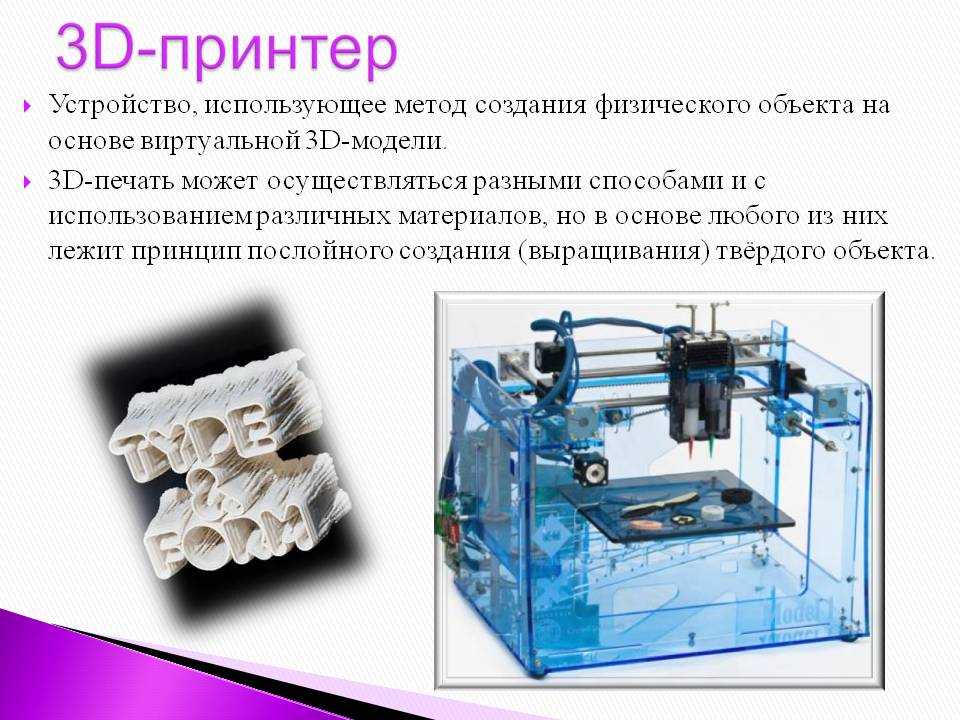 In the same year, the FDA approved the first 3D printed tablet.
In the same year, the FDA approved the first 3D printed tablet.
Zero-G 3D printer sent to ISS in 2014
In 2014, SpaceX delivered the first zero-gravity 3D printer to International Space Station. It is now used by astronauts to print useful tools such as socket wrench.
In fact, many assembly projects planned on planets or asteroids will be bootstrapped somehow using the materials available in nearby regions. 3D Printing is one of the major steps in this bootstrapping.
Nowadays, tech companies are integrating additive manufacturing with cloud computing to enable decentralized and geographically independent distributed production. Some companies offer online 3D printing services (via website) to both private and commercial customers.
Read: 40 Best Websites to Download Free STL Files for 3D Printing
Future Of 3D Printing
The big dream of 3D Printing is “a factory in everyone’s house.” It may sound strange, but there is no denying that owning a machine that can instantly churn out infinitely customizable things is fascinating.
Much like computers and smartphones have empowered billions of people, 3D printers might do the same for manufacturing.
According to GrandViewResearch, the global 3D printed market was valued at $11.58 billion in 2019, and it is expected to reach over $33 billion by 2027 (at a 14% growth rate per year).
The factors expected to drive the market growth include the aggressive R&D and increasing demand for prototyping applications from various industry verticals, particularly automotive, aerospace, defense, and healthcare.
How a 3D printer works, what can be printed on a 3D printer
The 3D printer is a technology that allows you to create real objects from a digital model. It all started in the 80s under the name "rapid prototyping", which was the goal of the technology: to create a prototype faster and cheaper. A lot has changed since then, and today 3D printers allow you to create anything you can imagine.
Contents:
- What is 3D printing? nine0012
- How does a 3D printer work?
- What can be printed?
The 3D printer allows you to create objects that are almost identical to their virtual models.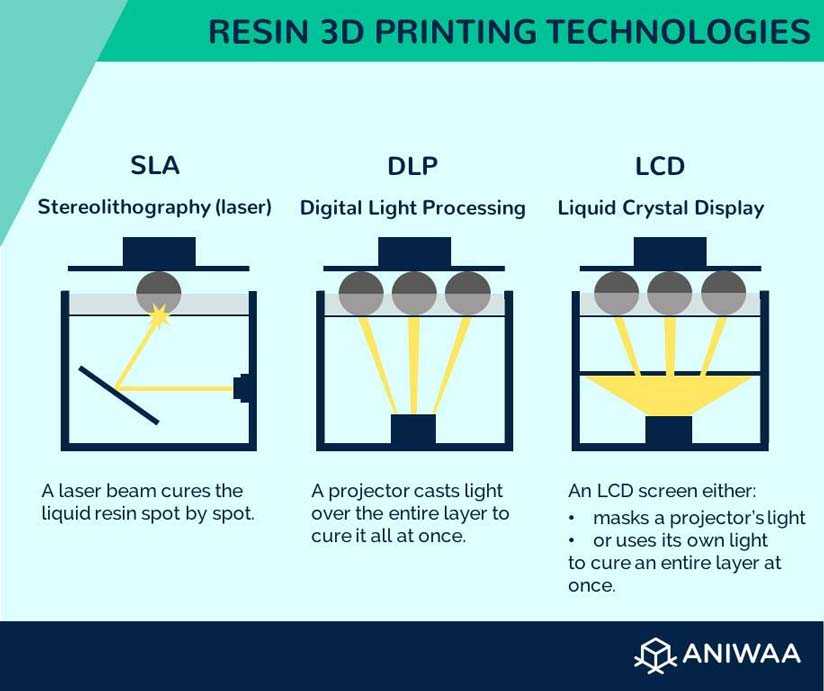 That is why the scope of these technologies is so wide.
That is why the scope of these technologies is so wide.
What is 3D printing?
3D printing is an additive manufacturing process because, unlike traditional subtractive manufacturing, 3D printing does not remove material, but adds it, layer by layer—that is, it builds or grows. nine0005
- In the first step of printing, the data from the drawing or 3D model is read by the printer.
- Next is the sequential overlay of layers.
- These layers, consisting of sheet material, liquid or powder, are combined with each other, turning into the final form.
With limited production of parts, 3D printing will be faster and cheaper. The world of 3D printing does not stand still and therefore there are more and more different technologies competing with each other on the market. The difference lies in the printing process itself. Some technologies create layers by softening or melting the material, then they provide layer-by-layer application of this same material.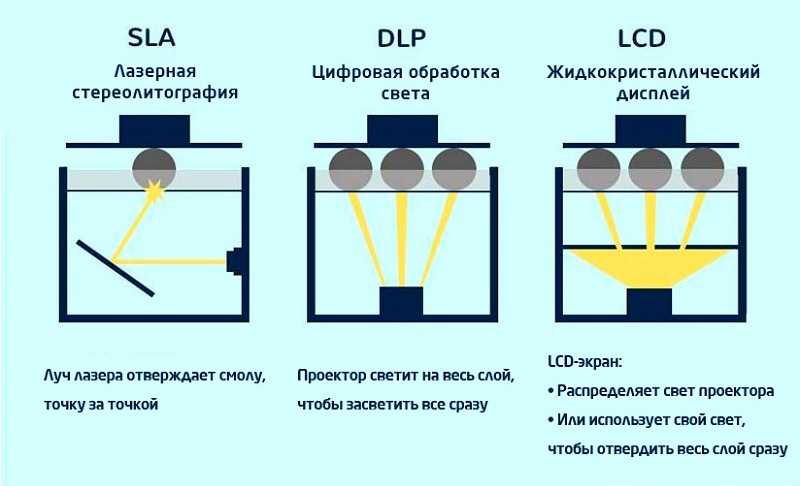 Other technologies involve the use of liquid materials, which acquire a solid form in the process under the influence of various factors. nine0005
Other technologies involve the use of liquid materials, which acquire a solid form in the process under the influence of various factors. nine0005
In order to print something , you first need a 3D model of the object, which you can create in a 3D modeling program (CAD - Computer Aided Design), or use a 3D scanner to scan the object you want print. There are also easier options, such as looking for models on the internet that have been created and made available to other people.
Once your design is ready, all you need to do is import it into the Slicer, a program that converts the model into codes and instructions for a 3D printer, most of the programs are open source and free. The slicer will convert your project into a gcode file ready to be printed as a physical object. Simply save the file to the included SD card and insert it into your 3D printer and hit print. nine0005
The whole process can take several hours and sometimes several days.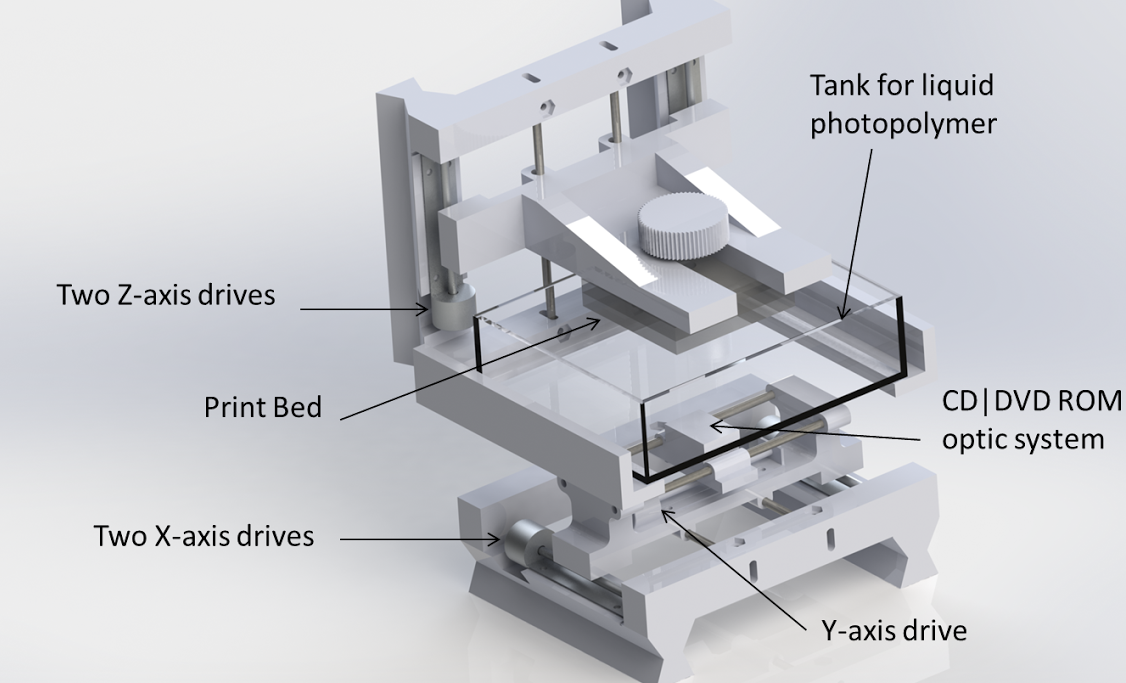 It all depends on the size, material and complexity of the model. Some 3D printers use two different materials. One of them is part of the model itself, the other acts as a prop that supports parts of the model hanging in the air. The second material is subsequently removed.
It all depends on the size, material and complexity of the model. Some 3D printers use two different materials. One of them is part of the model itself, the other acts as a prop that supports parts of the model hanging in the air. The second material is subsequently removed.
How does a 3D printer work?
Although there are several 3D printing technologies, most create an object by building up many successive thin layers of material. Typically desktop 3D printers use plastic filaments (1) which are fed into the printer by the feeder (2) . The filament melts in the print head (3) which extrudes the material onto the platform (4) creating the object layer by layer. Once the printer starts printing, all you have to do is wait - it's easy.
Of course, as you become an advanced user, playing with the settings and tweaking your printer can lead to even better results.
What can be 3D printed? nine0021
The possibilities of 3D printers are endless and they are now becoming a common tool in fields such as engineering, industrial design, manufacturing and architecture.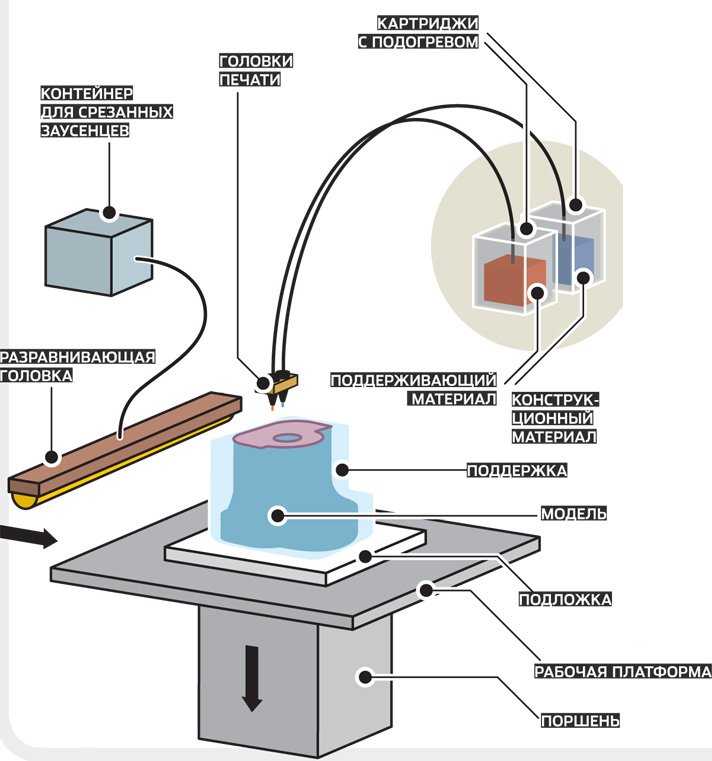 Here are some typical usage examples:
Here are some typical usage examples:
Custom Models
Create custom products that perfectly match your needs in terms of size and shape. Do something that would be impossible with any other technology.
Rapid Prototyping
3D printing allows you to quickly create a model or prototype, helping engineers, designers and companies get feedback on their projects in a short time.
Complex geometry
Models that are hard to imagine can be easily created with a 3D printer. These models are good for teaching others about complex geometry in a fun and useful way.
Cost reduction
The cost of 3D printing end-use parts and prototypes is low due to the materials and technology used. Reduced production time and material consumption as you can print models multiple times using only the material you need. nine0005
How to choose and buy a 3D printer? →
3D printer: how it works and what it can do
Just a mere ten years ago, 3D printers were huge, expensive machines reserved for large factories and corporations. All 3D printer models are very different from each other. They come in a variety of styles and can be optimized for a specific audience or type of print. At the moment, there are many 3D printers and their differences are in print quality (printer resolution), print speed, working space, the ability to use different materials, colors, and even the ability to print several objects at the same time. The capabilities of the printer are very high: creating models of houses, printing frames for bicycles, printing car body parts, creating prostheses, and even printing living tissues from biomaterial. 3D printers are an extremely promising development in the field of medicine. At the moment, thanks to volumetric printing, specialists can quickly create a high-quality bone implant, prosthesis, complex medical instrument, etc. Even now, doctors are trying to recreate a functioning organ, but so far these are just experimental developments. Let's talk about how the magic printer works. How does this machine manage to transfer a digital three-dimensional model into space? nine0005 The working part of a 3D printer consists of a platform (workspace) and an “extruder” print head (extrude). The extruder creates an object in layers by extruding a thermoplastic (or other material) into a filament (thread). The extruder is divided into two main parts: the upper one is the filament feeding unit and the lower one is the nozzle with the heater. In the block there is a roller and a gear connected to an electric motor. These elements pull the thread and bring it down to the nozzle, where the material comes out to the working surface in a molten form. In addition to the above-described extruder, there is a Bowden extruder in which the hot and cold parts are separated. The filament in this type of extruder is fed from the feed unit on the printer body to the nozzle through the tube. Some new 3D printer models have two or three extruders, which allows you to work with several colors and print several models in parallel. Thermal printers are not the only machines that can print 3D models. A 3D printer with a cold extruder in the form of a syringe is extremely popular at the moment. Such a printer allows you to work with concrete mixtures, clay, silicone, plasticine, etc. This type of printer is used in construction. To date, there are already houses built using a large construction printer. It has a height of 6 meters and a span of about 150 meters. At the moment, the printer can print the floor and walls of the building, but the windows, ceiling and roof are mounted as usual. When making the walls of a residential building, the printer builds several dozen layers and the machine is turned off, reinforcement is laid around the perimeter of all walls, and the printer continues to work on the house. This technological process is repeated over and over again until the construction of the entire house.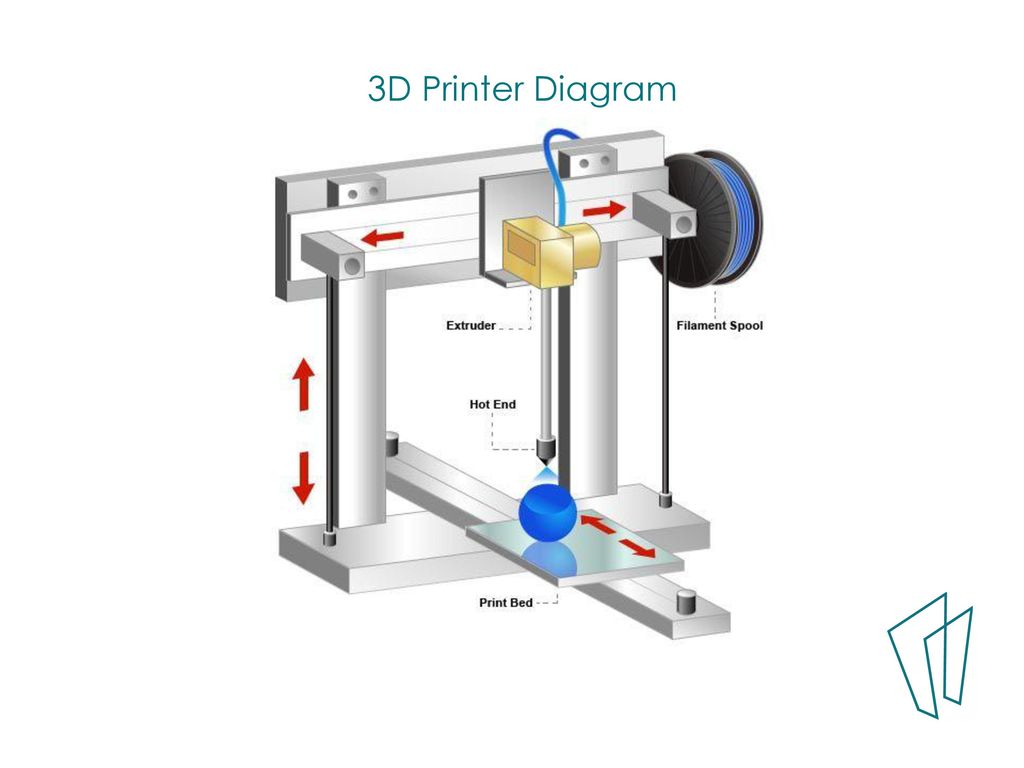 All of them remained hidden outside the narrow circle of specialists who designed and used them. But mostly thanks to the open source RepRap movement, these amazing devices have become viable and affordable products for designers, engineers, hobbyists to use. Many educational institutions also managed to acquire 3D printers, which confirms the prospects of this direction. nine0005
All of them remained hidden outside the narrow circle of specialists who designed and used them. But mostly thanks to the open source RepRap movement, these amazing devices have become viable and affordable products for designers, engineers, hobbyists to use. Many educational institutions also managed to acquire 3D printers, which confirms the prospects of this direction. nine0005  nine0005
nine0005  A temperature sensor is installed at the extruder nozzle. This printer part allows you to monitor extruder temperatures, as the original or user settings may go wrong. As everyone knows, each material has its own melting points, and when using any of them, it is necessary to set the appropriate temperature. The heating element consists of a nichrome wire spiral and a pair of resistors. The top of the extruder gets very hot during the printing process, which is unacceptable as the material melts prematurely. To prevent this trouble, a heat-insulating gasket is installed between the cold and hot parts of the extruder. In addition, a cooler and a radiator are installed on the block with the thread feeder. nine0005
A temperature sensor is installed at the extruder nozzle. This printer part allows you to monitor extruder temperatures, as the original or user settings may go wrong. As everyone knows, each material has its own melting points, and when using any of them, it is necessary to set the appropriate temperature. The heating element consists of a nichrome wire spiral and a pair of resistors. The top of the extruder gets very hot during the printing process, which is unacceptable as the material melts prematurely. To prevent this trouble, a heat-insulating gasket is installed between the cold and hot parts of the extruder. In addition, a cooler and a radiator are installed on the block with the thread feeder. nine0005 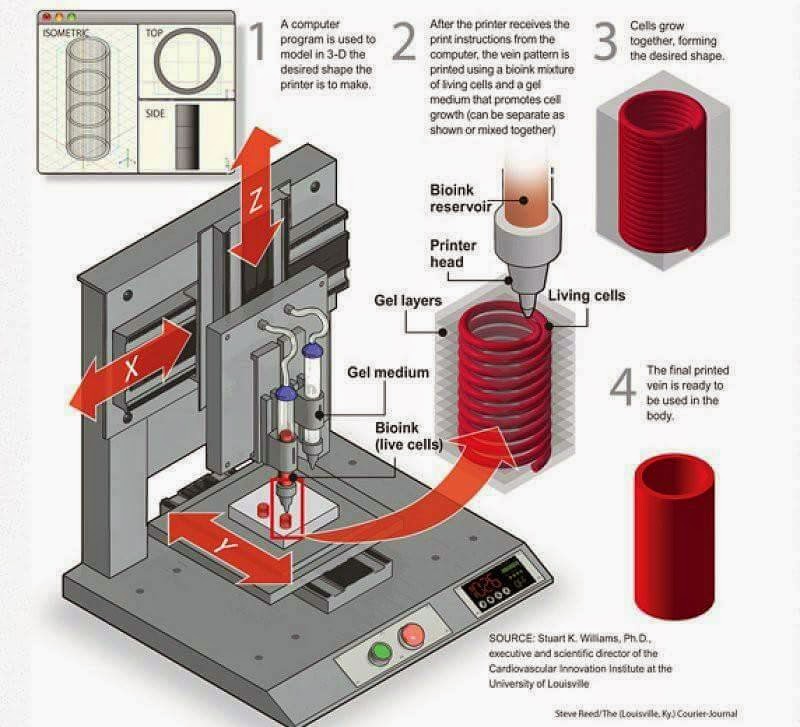 There is also an experimental model of an extruder with multiple filament feeders and a single nozzle. nine0005
There is also an experimental model of an extruder with multiple filament feeders and a single nozzle. nine0005 
Learn more






